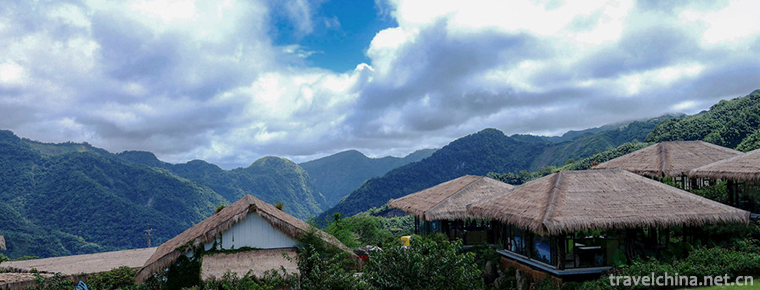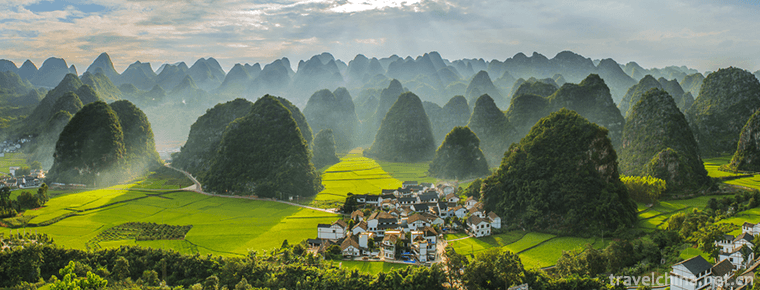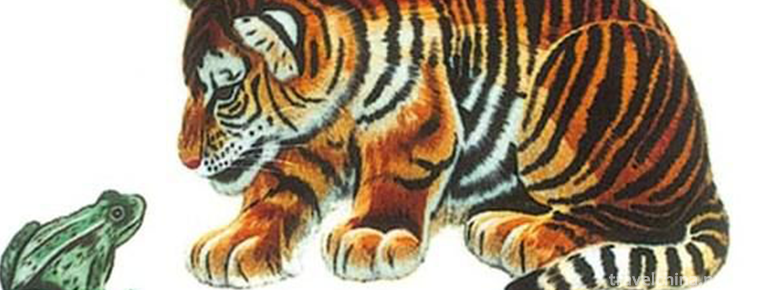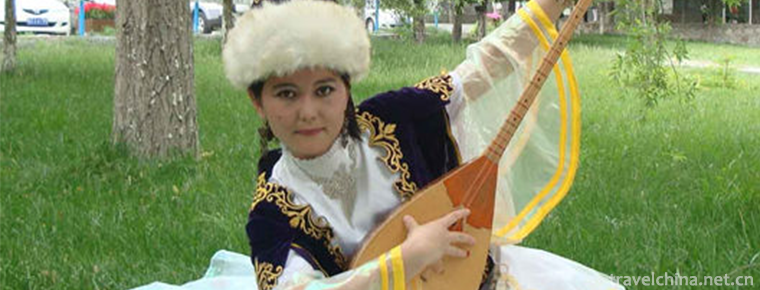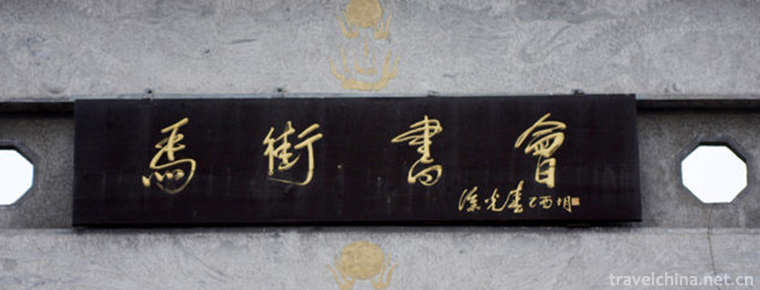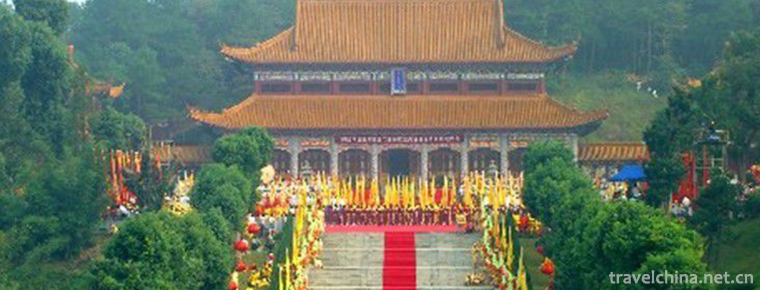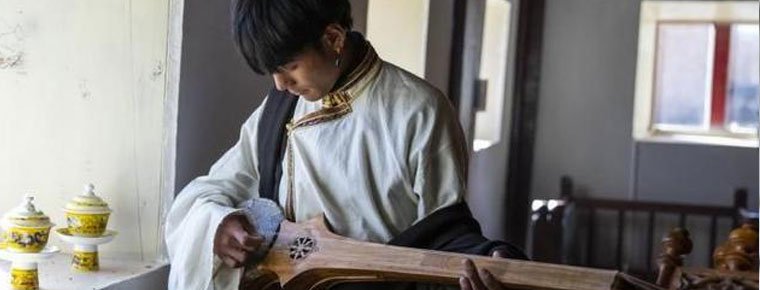martial art of emei
martial art of emei
Emei Wushu is one of the traditional Chinese Wushu schools, and its birthplace is Emei, a famous mountain in China. Including the worldwide spread of "Five Flowers", that is, Qingcheng Mountain in Dujiangyan, Chengdu City, Sichuan Province (Qingcheng School). Jintang Yunding Mountain Tiefu Temple Area (Tiefu School), Fengdu District of Sichuan Qingniu Mountain (Qingniu School), Fuling District of Sichuan Province (Dianyi School), Rongchang and Longchang of Sichuan Province (Huanglin School). Eight Leaves refers to Zhaomen, Monk Gate, Yuemen and Dumen, which are known as the four great masters in the world. Hong, Hua, Zi, will be called the Four Small Homes. Tang Shunzhi, a Ming Dynasty man, wrote the Emei Seven Ways Boxing Song, which said: "Putu is good and imaginary, and Emei Boxing is unique in the world.
In 2008, Emei Wushu was selected as the second batch of national intangible cultural heritage catalogue No. VI-23.
historical origin
Spring and Autumn Period and Warring States Period
Many scholars lived in seclusion in Mount Emei. Simu Xuankong, calling for inspiration, farmed and fed in the mountains. In the morning and night with Emeiling monkeys, he imitated the action of apes and created a flexible set of "Emei Tongjie" with many apprentices. Because Stu Xuankong often wears white clothes, the disciples are honored as "the White Ape ancestor". "History of Chinese Wushu" is recorded as "White Ape of the Warring States Period, First White Ming Shikou, Word Clothes No. 3, Moving Soul". In 1989, Sichuan Wushu Daquan published by Sichuan Science and Technology Publishing House was called "White Ape Gong in the Spring and Autumn Period and the Warring States Period, the three-character clothes, that is, Simu Xuankong in Emei Mountain". The 2001 edition of Leshan Chronicle contains "White Clothes III". It is said that Emei Tongjiquan was created by imitating mountain ape movements during the Warring States Period. It is flexible in attack and defense and has been widely taught in Emei Mountain. During the Northern Song Dynasty, Mount Emei became one of the four famous Buddhist mountains in China. The number of Buddhist monks and natural monks increased in the Taoist temples of Puxian Bodhisattva.
Jianyan Period of Southern Song Dynasty
By (1127-1130), Baiyun Zen Master of Linji Sect of Emei Mountain created "Emei Linji Qigong". In the Ming Dynasty, Emei Wushu entered its heyday, with a large number of elites and masters, and its boxing was more exquisite. Tang Shunzhi's "Emei Daoist Boxing Song" vividly and vividly describes the superb skills of the Ming Dynasty's Emei School of Boxing, from the start to the end of the whole process, its attitude, strength, body skills, fighting methods, breathing, rhythm and other links, are described in detail. He praised his outstanding hard work with "a sudden burst of foot, rocks burst and shocked the sand"; praised his soft work and flexibility with "a hundred folds and no bones, all hands scattered all over the body"; described his agility with "throwing a spiritual shuttle to the stars, curing the evil spirits and turning green sleeves"; generalized his retraction and closure with "Wu Qiaozhong is in danger, but people in clumsy hiding machine do not know how to do it", which can be said to be profound. The 30 sentences of "Emei Taoist Boxing Song" are the only thematic poems to celebrate Emei Wushu found nowadays.
The reign of Kangxi in Qing Dynasty
Wu Xin (1611-1695, Xiaolun Dust, Jiangsu Loujiang people), a Ming Dynasty survivor who studied Emei gun method from Zhu Xiongzhan, wrote the Arm Record, which elaborated various gun techniques accurately. It wrote that "Buddhist monk Puen of Emei Mountain in Xishu, Baimei of his ancestors, taught gun techniques by different people, set up a cave room, and studied Emei for two years, once he realized it thoroughly, he made deification, traveled all over the country, and never drove with him. Eighteen shooting techniques, twelve reversals, both offensive and defensive, break through all kinds of martial arts. It can be seen that it is unpredictable and exquisite. In Emei's gun method, there are such techniques as mind, body, movement and static, offensive and defensive, deliberation, caution and handdown, which greatly enrich the theory of Emei's Wushu.
Style and characteristics
Emei Wushu is neat, stretching, fast and brave. All kinds of legs and jumps require boxing, that is, Zhaomen Quan, which competes with people. There are empty steps and high piles. Bold. Skillfully, catch, hold, squeeze, depend on. A monk's door punch that is close to his body and has no legs but knees. Some of them are mainly grasping, playing "straw dragon pile" and "sand bag" with skill, and operating "drum". Stop, stop the opponent's attack of Dumen Boxing. There is Yue Men Quan, which combines soft entanglement and crisp beating and rigidity and softness. There are strong movements, heavy feet and heavy hands, supplemented by the voice of the Hong Men Quan. There are mainly jackets, holding, probing and Pakistani techniques. Flexible Huamen Quan. There are characters to choose meaning, each type of a word, to practise boxing, mainly single exercise. When Yunquan is carried out, it combines nose and breath to produce voice to assist Zimen Quan. There are Huimen Boxing, which uses consciousness to move limbs and attack and defense with limbs, and Huimen Boxing, which uses side-by-side to attack and defense, has a right body shape, and pays attention to swallowing, vomiting, sinking, floating and side-by-side, and Huanglin School, which uses speed to control speed and take advantage of forces in technical attack. Wushu workers have studied the boxing techniques of Emei Wushu to varying degrees. Emei Wushu is different from Southern Boxing and Northern boxing, which has its own unique features, and this kind of fighting style with north-south blending has gradually been recognized by the majority of Wushu researchers. For example, Zhang Peilian believes that the characteristics of Emei sword (Emei sword, Sichuan Science and Technology Publishing House, 1985) are as follows: swift hitting, round drawing, turning over like lightning, clouds turning around, surprising down, changeable swordsmanship, piercing like a fierce tiger, cutting like a mountain, wiping and sweeping, virtual and real, based on life, fast as the top, winning by skillful.
Meng Xianchao believed that the skills of Emei boxing were the secret of cross attack and defense, including Chen Fa, concession method, flash method, top method, detection method, follow-up method, common method, deception method, Tibetan method and wrong method. Dong Rujun believed that (Secrets of Ancient Practical Fighting: Emei School's Fist tells the truth), Beijing Sports University Press, 1991), Emei School's Fist belongs to the internal fist technique, which emphasizes rigidity, softness, melody and straightness. The tactics of tactics of attacking and attacking lay stress on luring the enemy into depth and then attacking the enemy. Zhao Hongbin believes that the style of Emei's gun method is characterized by its silent footwork, silent stance, and both offensive and defensive actions, which is reflected in The Records of Arms (Exploration of Four Great Guns in Ming and Qing Dynasties, Wulin, No. 7, 1993). The theory of gun technique stresses that it is easy to use skills and difficult to cure the mind. It puts forward the theory of opposing gun technique of treating the body, moving, tranquil, offensive and defensive, and judging the situation. Wang Jian believes that (Xiemei Wugong, Southwest Jiaotong University Press, 2004) Emei Wushu routines are characterized by short and concise, more fists and less legs, flexible and changeable steps, in order to prevent substitution for attack. The characteristics of attack are first-in-advance, flashing "turn", capturing and closing, back lock, hook and bullet kicking, huff and puff ups and downs. Wugong is characterized by both internal and external training, and shrinking, small, soft and skillful.

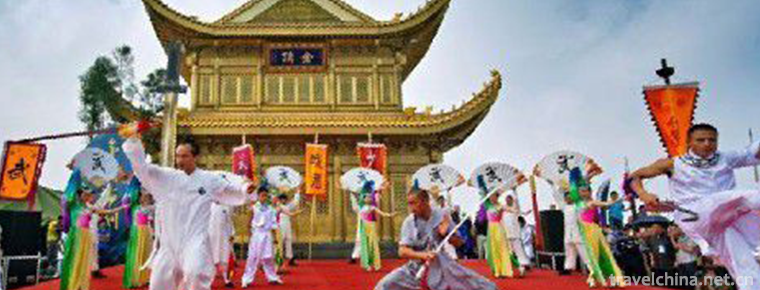
-
Ali Mountain
Mount Alishan, located 75 km east of Jiayi City, Taiwan Province, is located at an altitude of 2,216 meters. Its coordinates are 23 degrees north and 31 minutes east.
Views: 270 Time 2018-10-30 -
Wanfeng Forest Scenic Area
Wanfeng Forest Scenic Area, located in the southeast of Xingyi City, Guizhou Province, is the largest and most typical karst peak forest in China, with its magnificent momentum, peculiar shape and bea.
Views: 164 Time 2018-12-17 -
Dongping Lake Scenic Spot
The total area of Dongping Lake Scenic Spot is 627 square kilometers, the annual water surface is 209 square kilometers, the average water depth is 2.5 meters, and the total water storage is 4 billion.
Views: 163 Time 2018-12-20 -
Rob Village
Located 35 kilometers southwest of Yuli County, Luobu Village is 85 kilometers south of Korla City. The village covers 72 square kilometers and has more than 20 families.
Views: 186 Time 2019-02-06 -
Bian Embroidery
Bian embroidery, one of the traditional Chinese embroidery techniques, has a long history and is known as "national treasure". It is famous for its exquisite embroidery,.
Views: 331 Time 2019-04-04 -
Kazakhstan 62 Kwohner
Kazakhstan 62 Kwohner 62 Kwohner is Kazakh folk classical music, which means "62 suites". It is a comprehensive art mainly composed of instrumental music, accompanied by folk songs, dances,.
Views: 207 Time 2019-05-02 -
Legend of Liu Bowen
Liu Bowen's legend is based on the traditional folk oral literature of Liu Ji, a historical figure, spread throughout the whole country in eastern Zhejiang, with Qingtian, Wencheng and other southern .
Views: 364 Time 2019-05-13 -
Ma Street book fair
The Majie Book Club is a grand Chinese folk music festival. Located 5 kilometers south of Baofeng County, Henan Province, it is a "pilgrimage site" for rap artists all over the country. Ever.
Views: 158 Time 2019-05-15 -
lion dance
Lion dance, also known as "Lion Dance", "Lion Lantern", "Lion Dance", "Lion Dance", "Lion Dance", is one of the folk dances of all ethnic groups in Ch.
Views: 80 Time 2019-06-14 -
Yandi Festival
"Yandi Mausoleum Festival" is divided into official and folk sacrifices. Folk sacrifice began in summer, official sacrifice originated in Zhou, and Emperor sacrifice originated in Tang Dynas.
Views: 165 Time 2019-07-10 -
Ding Zhen heaven on earth with fire
This "paradise on earth" with fire Ding Zhen absorbed tens of millions of powder overnight, and the search volume increased by 620%.
Views: 66 Time 2020-12-07 -
Nanchongs tertiary industry
In 2019, investment in real estate development in Nanchong will increase by 23.6% compared with that in 2018. The construction area of commercial housing was 31.8726 million square meters, an increase of 23.5% over that in 2018, of which the newly started.
Views: 336 Time 2020-12-17
